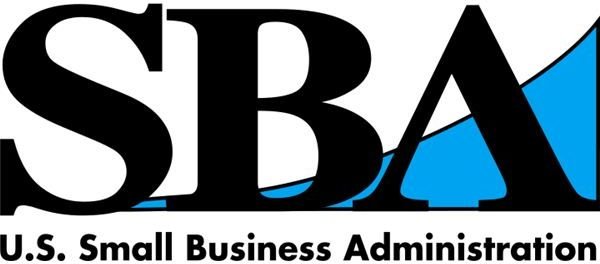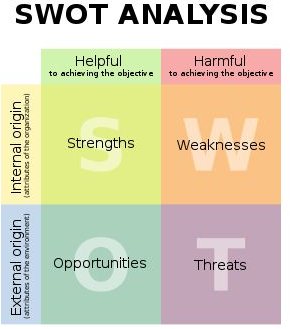Learn the Signs of a Bad Business Plan - Tips on Catching Mistakes
It’s a Strategy
The plan for your business should be thought of as a strategy, and if you don’t know what you’re doing, you’ll end up with a bad business plan. Writing your strategies for success includes being realistic, the ability to forecast and compare predicted numbers to actual numbers, and including the elements investors and banks want to see.
There are essential elements to include in every business plan and you can find help right here on Bright Hub, However, how do you know the finished product will be well received?
Plan Mistakes

It’s best to think of your plan as a novella with a beginning, a story line and a great ending which will prove your business can and will be successful. Let’s take a look at where mistakes can be made sections within your plan.
Executive Summary – Plans containing an executive summary that is longer than two pages and rambles on will be ignored. Stick to the facts. The Small Business Association (SBA) suggests writing the other elements of your plan and then writing the executive summary or the snapshot of your business—and it must be engaging. In other words, this is the first part of your story, so entice the reader to peruse the rest of the plan. Boring is bad.
Business Description and Vision – Here, you must describe the vision and mission of your company along with goals as well as a short description of the business and the owners and partners of the business. Bad business plans confuse this with the executive summary and leave one or the other out. Both must be included.
Target Market – Your target market must be clearly identifie–and be specific. If your plan says “we will serve the state of New York”—that’s not defining your target market. Leaving out the demographics and profile of your target market makes the plan too vague.
Products or Services – Every single product or service you offer must be included here. If you don’t find a way to differentiate your product or service from the competition, again, the plan is missing the mark. Think about what makes your business different and explain why. Failure to include pictures or brochures on products or services as an exhibit will also hurt the plan.
Organization and Management – Leaving out your business entity, whether it’s an LLC or S Corporation or another type of entity, is a mistake. Readers of the plan want to know the legalities of your business including partnership shares and bios on owners and partners. Along with the business entity, this section must describe key personnel and define how the business will be managed. A list of business licenses obtained along with issuing organization and expiration dates is key in this section. If you have applied for licenses but haven’t received them at time of writing the plan, state the type of license and the date applied.
Marketing and Sales Strategy – The SBA recommends that this section includes what they call the 4Ps, or pricing, promotion, products and place, along with a detailed description on marketing strategies. Banks or investors will also look for a SWOT analysis in this part of the plan that shows briefly your strengths, weaknesses, opportunities and threats plus how you’ll deal with each of them. Leaving out the SWOT analysis only means one will be requested.
Financials – Another mistake many existing business owners make is failing to include items such as three years of tax returns, balance sheets, income and expense statements and a cash flow statement. A new business that fails to include expected start-up costs, an opening day balance sheet and cash flow and sales forecasts will only have its business plan returned.
Exhibits – Mentioning exhibits and failingl to include them is a sure sign of a poorly developed business plan.
The Numbers Game

As you write your plan, you’ll include expected cash flow statements that show unit sales, revenues and expenses (actual or forecasted). Plans where the marketing and sales strategy points out a number of units sold (or expected) and other important target numbers to achieve only to use different numbers in the financial section is a sure sign your plan is disorganized and not thoroughly proofread or researched.
If your organization and management section defines five top managers and your executive summary only offers three, this will surely make the reader pause or become confused on your actual management goals.
When the product and services section defines ten different elements and the executive summary or the sales information fails to include each of them to account for total sales revenues, again your plan is unorganized and written too quickly.
Ask These Questions

Another way to tell if your plan is bad is to ask yourself, does it answer the following questions?
Outlook – What is the outlook of the business or goals, and how will the company continually strive to reach these goals?
Too Technical – No matter what you plan on selling, keep in mind the reader may not be savvy enough to understand the technical side—so use plain language that’s easy to read. The reader must be able to understand what it is you’re selling without asking questions about products or services after reading the plan.
Bumps Facing the Company – Never leave out a SWOT analysis—this essentially will show the reader in a snapshot important elements such as the competition, what makes your company and products strong in today’s market, what opportunities you can capture, and what processes you will use to overcome threats from demographics or other hurdles you will need to jump along the way.
Lack of Financial Documents – Lenders and investors want these—especially if you are applying for a small business loan. Banks have very defined ways on how they “spread” your financial numbers to see if you will be able to achieve what you promise.
Including Incorrect Information – Business plan readers are smart. They will be able to spot blatant mistakes so make sure your information is accurate.
Proofreading – If you don’t want to proofread your plan and check for the appropriate use of grammar, then have someone else do this for you. No reader wants to see typos or poor grammar; this is a sure way to kill your plan.
Length – Avoid a plan that is too long. Sure, you have a lot of areas to cover in each element–but they shouldn’t be novels in and of themselves. Take out redundancies and other information not pertinent to the plan. For example, the reader doesn’t want to know how you developed your vision or mission; he just wants to know what they are.
Where to Find Help

The very best place to find examples and templates on the correct way to write a business plan is the SBA. Although software such as Business Plan Pro can be extremely helpful, the SBA offers a way for you to enter elements into each required section and warns if the section is too long. Once you have completed it, you have the ability to hit one button to “create the plan” and print it. You can find a link to the SBA business plan template in the reference section below.
A bad business plan will surely deny you the investors you need or that capital loan you want. Once your plan is written think of it as a business case statement which must be updated as your company, market or other elements change. A business plan should be kept current and up-to-date, even for existing businesses.
Existing businesses should use the plan to ensure they’re on track and are improving. If progression isn’t seen, the plan should be redesigned and perhaps even rewritten. Use every resource you can in order to develop the best plan to ensure it is enticing, tells the story, explains the facts, and wraps it up with accurate financials—remember readers expect the best, so offer a shining plan, not a bad business plan.
References
Isidro, Isabel - Power Home Biz – Common Mistakes in Preparing Business Plans retrieved at https://www.powerhomebiz.com/vol3/badbplan.htm
SBA Business Plan Template - https://web.sba.gov/busplantemplate/BizPlanStart.cfm
Image Credits:
Chess Position - Wikimedia Commons/MichaelMaggs
SBA Logo - Wikimedia Commons/US Government
Dice Game - Wikimedia Commons/Diacritica
SWOT Analysis - Wikimedia Commons/Xhienne
Question Mark - Wikimedia Commons/Neutrality
